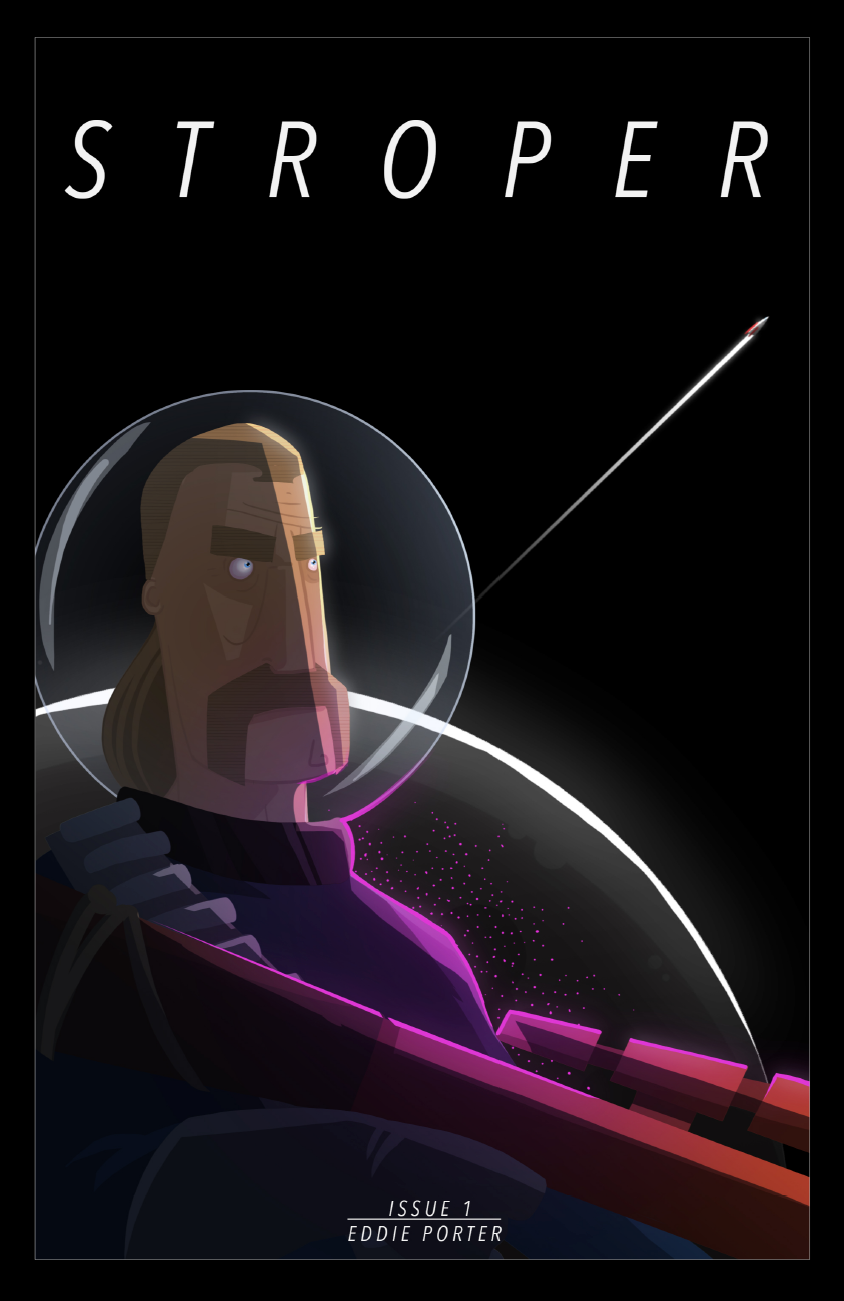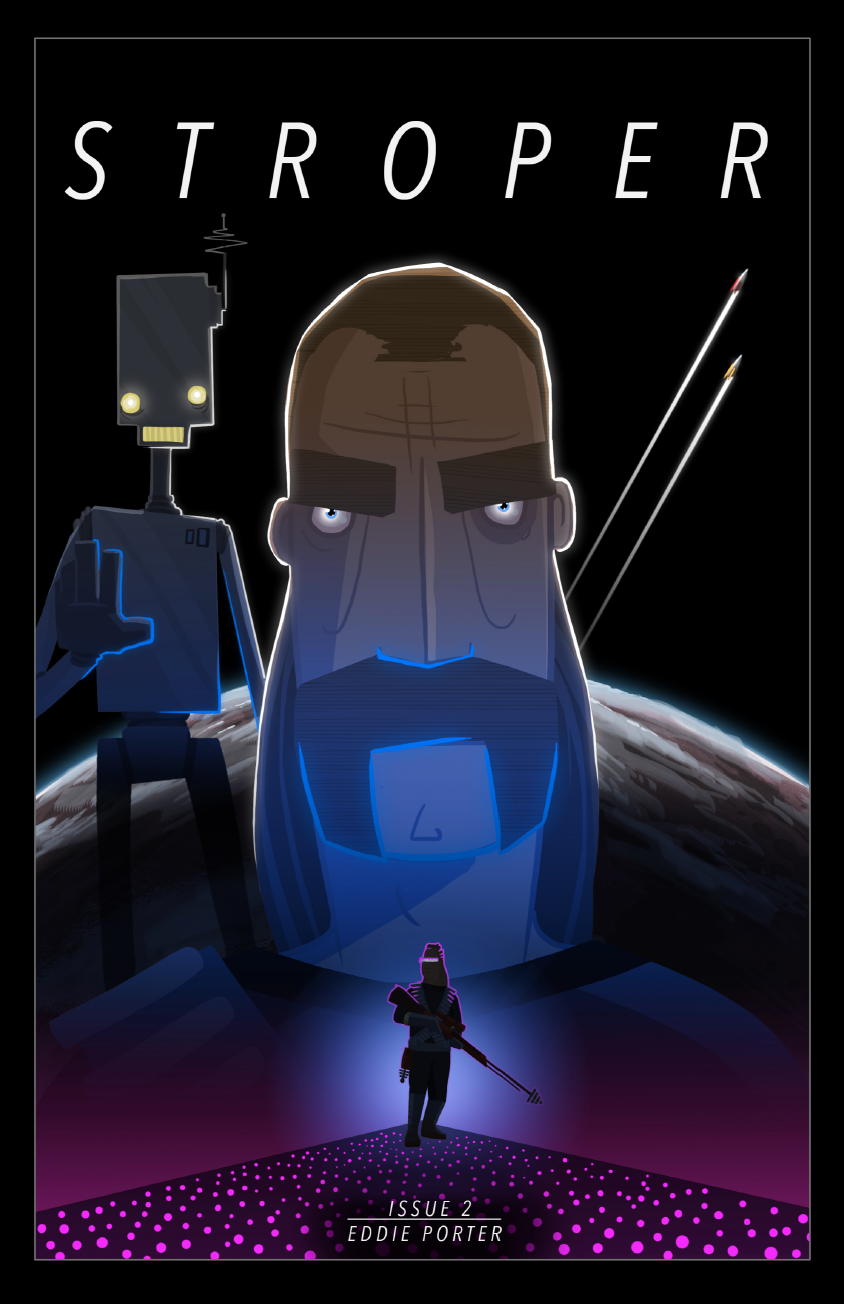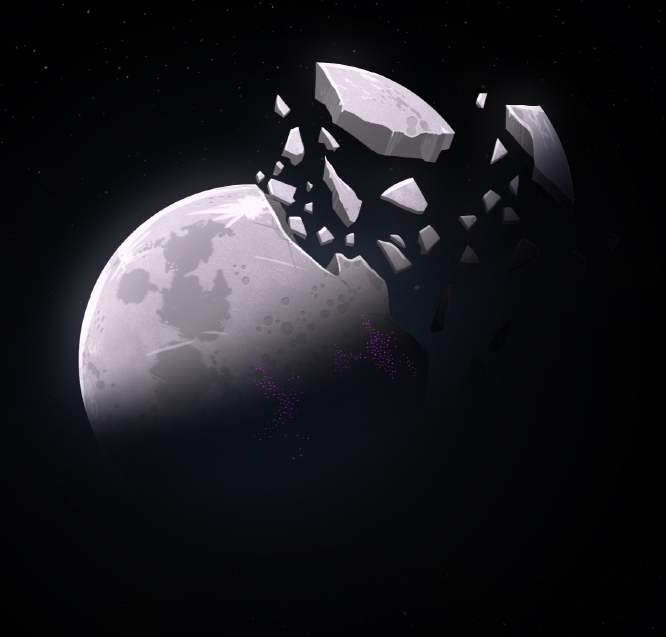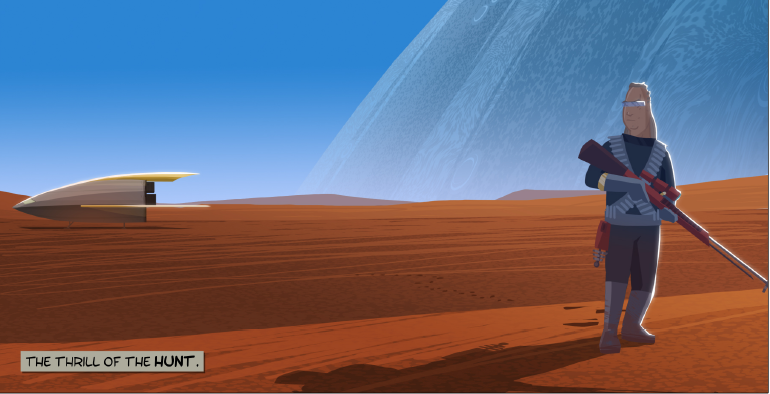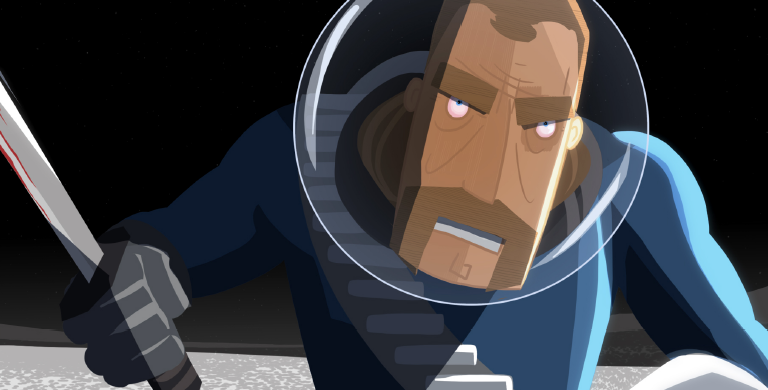As the writer of a science fiction, space adventure webcomic with a retro-futuristic aesthetic, hyper-vivid colors, dramatic lighting and a tough-guy protagonist possessing of a somewhat antiquated sense of style, it can be hard to solve for the variable in the all-important equation “If you like ‘X’ you may also like my comic, Ion Grip.” But now I’ve found Stroper––a science fiction, space adventure webcomic with a retro-futuristic aesthetic, hyper-vivid colors, dramatic lighting and a tough-guy protagonist possessing of a somewhat antiquated sense of style––by Eddie Porter. And holy damn do I find myself in good company.
Stroper is the story of Pak Booker, a mulleted poacher of endangered alien wildlife. Booker seems to take no joy in his work; indeed, the danger inherent in the job and the great length he is willing to go to in stalking his prey demonstrate the terrible need Booker must be in to resort to a life of crime. All this is subtly and competently covered in the first few pages of issue #1 and sets up our Anti-hero’s true antagonist: a universe rife with injustice, corruption, and oppression.
Eddie Porter writes and draws this book with the laser-focused vision one only finds in single-creator works, and yet he somehow avoids the self-indulgent pitfalls that many such books succumb to. He chooses his battles, both narratively and stylistically, providing the reader with a concise story and a stark, cartoony aesthetic. No panel is wasted––long, shadowy scene-setters burst with mood, action scenes punch you with just the right microsecond, and dialogue is brief but nuanced. I am not aware of any other comic Porter has worked on, but he attacks this book like a veteran, confident in his skills.
Issues #1 and #2 are available now and I highly recommend fans of Ion Grip and innovative comic storytelling go pick them up.

